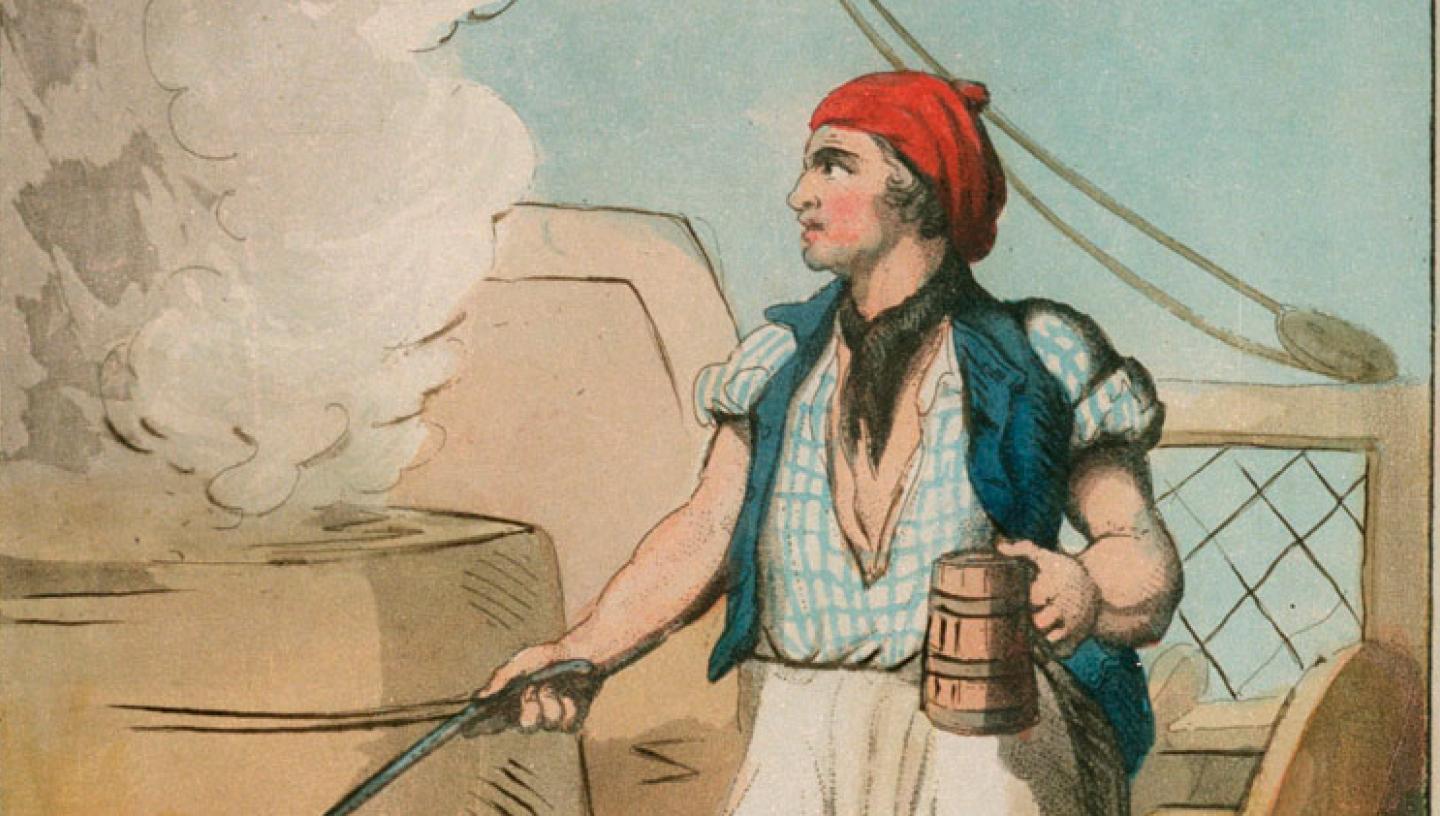
This three-year research project, funded by the Leverhulme Trust, is now completed. It started in May 2006 and finished in October 2009. The research and writing was done by a team of three at the Greenwich Maritime Institute, University of Greenwich, in conjunction with the National Maritime Museum.
The purpose of the research was to investigate how the Royal Navy fed itself during the French Revolutionary and Napoleonic Wars, 1793-1815. The researchers needed to find out how naval victualling worked, how efficient it was, and to assess its impact both on the operational efficiency of the navy, and how much it affected the British economy. In particular, it has examined the work of the private producers, manufacturers, agents and merchants who were contracted to the government. They were involved at every level of the victualling operation, as they were in many other aspects of eighteenth-century governance. This project complements other current research examining the interaction of the state and the private sector, still a subject of the greatest interest in twenty-first century politics.
Who made up the research team?
The project was led by Dr Roger Knight, Professor of Naval History at the Greenwich Maritime Institute. He was deputy director of the National Maritime Museum until 2000, and author of The Pursuit of Victory: the Life and Achievement of Horatio Nelson (2005). Roger is now Senior Research Fellow at the Institute of Historical Research. His recent book Britain Against Napoleon: The Organization of Victory, 1793-1815 was published by Allen Lane in 2013 and builds on the work conducted during the ‘Sustaining the Empire’ project.
Dr Martin Wilcox was the Research Fellow on the project. He completed his PhD in maritime history at the University of Hull, and joined Greenwich Maritime Institute in May 2006. In 2014 Martin returned to the University of Hull to take up a position as a lecturer, where he teaches various aspects of modern British maritime history.
James Davey joined the project as Research Assistant in August 2006, after completing an M.St. at the University of Oxford. After completing his PhD he was appointed as a curator at the National Maritime Museum. His recent book, In Nelson’s Wake: The Navy and the Napoleonic Wars (Yale University Press, 2015) incorporates some of his doctoral research.
The project was advised by Professor Sarah Palmer, Director of the Greenwich Maritime Institute, by Dr Douglas Hamilton (now at Sheffield Hallam University) and by Dr John McAleer (now at the University of Southampton).
What are the results?
Publications:
The main result of the project is a book entitled Sustaining the Fleet, 1793-1815: War, the British Navy and the Contractor State, written by Professor Knight and Dr. Wilcox, and published in 2010.
James Davey completed his Ph.D. in September 2009. Its title is: ‘War, Logistics and the British State: Supplying the Baltic Fleet, 1808-1812’. This was later published as The Transformation of British Naval Strategy: Seapower and Supply in Northern Europe, 1808-1812 (Boydell, 2012).
In addition, five articles have been published or accepted for publication: three examples:
- Roger Knight, ‘Politics and Trust in Victualling the Navy, 1793-1815’, The Mariner’s Mirror, vol. 94, 2008, pp. 133-149
- Martin Wilcox, ‘“This great complex concern”: victualling the Royal Navy on the East Indies station, 1780-1815, The Mariner’s Mirror, vol. 97, 2011, pp. 32-48
- James Davey, ‘Within Hostile Shores: victualling the Royal Navy in European waters during the French Revolutionary and Napoleonic Wars’, International Journal of Maritime History, vol. 21, No. 2, 2009, pp. 241-260
Conferences:
- A workshop, ‘The Contractor State’ was held at the University of Greenwich in April 2007, with 25 invited attendees, and six speakers from various British universities.
- In April 2009 a one-day conference was also held at the University of Greenwich, entitled ‘New Perspectives on Resources, War and Government, 1750-1815’. There were ten speakers from the universities of Exeter, London School of Economics, Dusseldorf and the Greenwich Maritime Institute, and the meeting was attended by 72 delegates.
- In addition, the team attended fifteen conferences, reading papers at the majority of them.
Legacy of the project
The ideas developed in the Leverhulme project slotted neatly into current European-wide historical debates on the process of state formation in the early modern period up to 1815. In Britain the debates had been crystallised in 1989 in John Brewer’s The Sinews of Power, from which came the idea of ‘the fiscal military state’. This firmly established the idea that the national effort in gathering money through taxes was central to the establishment of the state and its efficiency.
In order to build on these ideas, historians began to investigate how efficient states were in spending the taxes which had been collected. These historians formed themselves into the ‘Contractor State Group’, meeting in November 2011 Las Palmas de Grand Canaria, and whose proceedings were published in Richard Harding and Sergio Ferri (eds.) The Contractor State and its Implications, 1659-1815 (Las Palmas, 2012). The phrase ‘contractor state’ is now very much part of the historian’s lexicon
Alongside the project’s academic significance, its findings have also been communicated to the public in a variety of ways. Food and health at sea remain subjects of great popular interest, and the research team continue to disseminate the projects findings through talks, publications and media interviews. Furthermore, victualling was also an important element in the National Maritime Museum’s permanent gallery ‘Nelson, Navy, Nation’, which opened in 2013. It included a graphic, created with the help of the project researchers, which demonstrated the national breadth of food contracting and the main supply routes into the Royal Dockyards. Through such means, the project continues to inform the public and academy alike.
More about the project
Read more about the project, its findings and outputs, including details of what sailors ate and where it came from, and the importance of victualling to the Navy:
See interactive maps of the routes food products took to feed the Navy